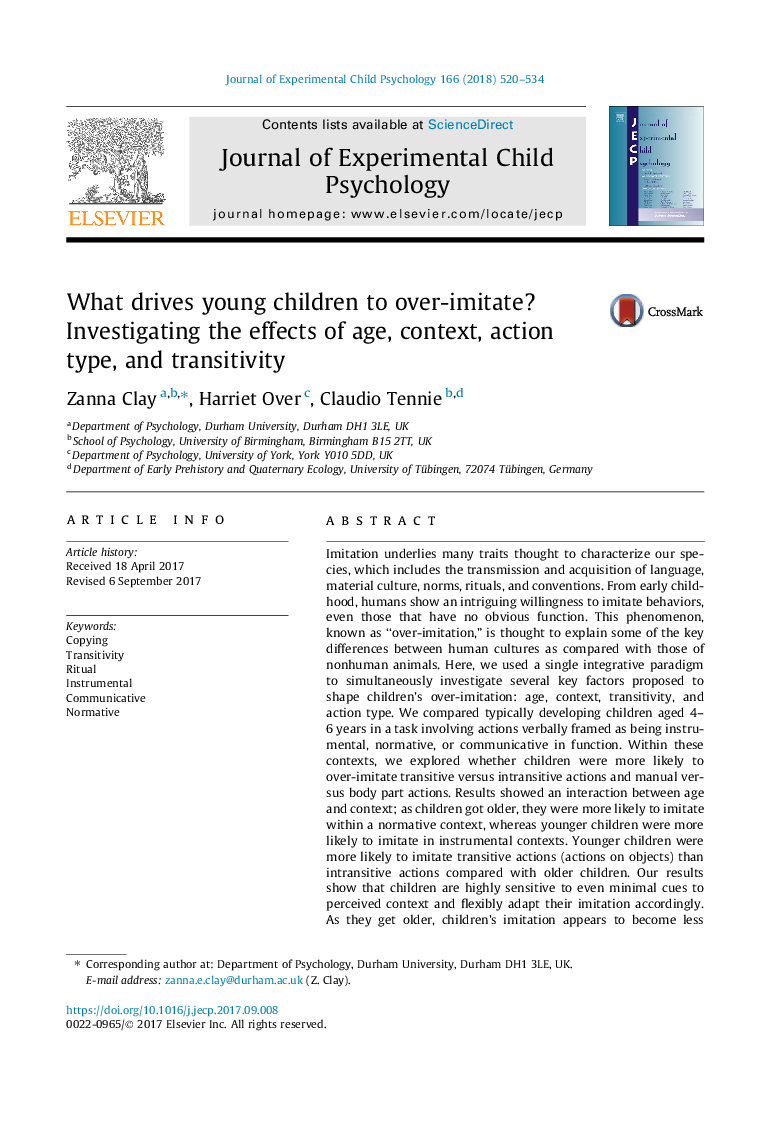| Article ID | Journal | Published Year | Pages | File Type |
|---|---|---|---|---|
| 7274247 | Journal of Experimental Child Psychology | 2018 | 15 Pages |
Abstract
Imitation underlies many traits thought to characterize our species, which includes the transmission and acquisition of language, material culture, norms, rituals, and conventions. From early childhood, humans show an intriguing willingness to imitate behaviors, even those that have no obvious function. This phenomenon, known as “over-imitation,” is thought to explain some of the key differences between human cultures as compared with those of nonhuman animals. Here, we used a single integrative paradigm to simultaneously investigate several key factors proposed to shape children's over-imitation: age, context, transitivity, and action type. We compared typically developing children aged 4-6Â years in a task involving actions verbally framed as being instrumental, normative, or communicative in function. Within these contexts, we explored whether children were more likely to over-imitate transitive versus intransitive actions and manual versus body part actions. Results showed an interaction between age and context; as children got older, they were more likely to imitate within a normative context, whereas younger children were more likely to imitate in instrumental contexts. Younger children were more likely to imitate transitive actions (actions on objects) than intransitive actions compared with older children. Our results show that children are highly sensitive to even minimal cues to perceived context and flexibly adapt their imitation accordingly. As they get older, children's imitation appears to become less object bound, less focused on instrumental outcomes, and more sensitive to normative cues. This shift is consistent with the proposal that over-imitation becomes increasingly social in its function as children move through childhood and beyond.
Related Topics
Social Sciences and Humanities
Psychology
Developmental and Educational Psychology
Authors
Zanna Clay, Harriet Over, Claudio Tennie,
